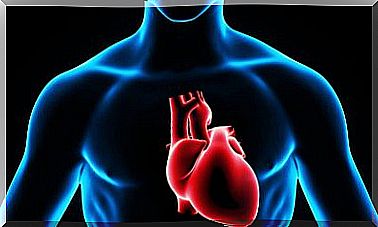Neymar Sprained His Left Ankle: What Is The Injury About?
Footballer Neymar suffered a sprained left ankle during the recent match between PSG and Lyon. The injury developed at the beginning of a shock trauma between the player and his rival team partner, Thiago Mendes.
Now, what is a sprained ankle about? This injury is common in the world of sports and is one of those that most affects the joint in question. Although footballers are exposed by the type of sport they practice, it is not uncommon in the world of athletics and basketball, for example, since pressure is exerted on the lower limbs there too.
What is the sprained left ankle that Neymar suffered?
Neymar’s left ankle injury is classified as a sprain by the treating doctors. This is about stretching the participating ligaments beyond their capabilities.
We must think of ligaments as soft structures designed to provide support and flexibility at the same time. They could be considered natural elastics that relax and return to their initial shape once the movement is finished. In the sprain there is an excessive lengthening of the tissues that do not regain their length, but instead weaken in the process.

In the case of Neymar’s left ankle sprain, it must be considered that the joint has 3 ligaments, all of which are susceptible to overstretching. These ligaments are as follows:
-
- External side.
- Anterior peroneotalar.
- Internal side.
Most of the time the lesion is located on the external side. This responds to the usual form of trauma that triggers the problem. It is usually a bad footfall or a collision with another object (the leg of an opposing player, for example) that moves the foot in or out, beyond its limits and capabilities.
How is an ankle sprain classified?
Not all of these injuries are equal in complexity and severity. In the case of Neymar’s left ankle sprain, we do not have precise information on the degree suffered, since the medical team did not specifically report it. However, we know that trauma science classifies them into three different types:
- First degree: this is the ankle sprain that is not associated with torn ligaments. The tissues are overstretched, but retain their integrity, although they lose elasticity. These cases are usually not very obvious and with bearable pain. There are even situations in which the athlete does not notice it.
- Second degree: In this intermediate severity there is a partial tear of the ligaments. Of course, as this injury exists on the tissue, fluid accumulates and the inflammation is almost immediate. Similarly, the pain is intense and disabling, forcing sports activity to stop. If the tear is large enough there will be an accumulation of blood in the form of a bruise.
- Third degree: This is the most serious variety of ankle sprain. The affected ligament is completely ruptured and the joint loses all functionality at the time. Pain is the most noticeable and mobility is non-existent from the beginning.
Risk factors for this injury
Any athlete can suffer, as happened to Neymar, a sprained ankle. However, there are risk factors that increase the possibility of injury. Similarly, a sedentary individual, an amateur athlete, or a professional athlete is not the same. The exhibition is different.
Among the most common risk factors for sprained ankle we have the following:
-
- Age: the greater the number of years of life, the more sensitivity there is in the ligaments. In reality, this happens because of the concomitant stiffness over time. The lower elasticity favors breaks in the soft tissues against movements that should not lead to injuries.
- Overweight: the joints of the lower limbs carry all the body weight when we are standing. Any excess will affect them, especially in the knees and ankles. If to this is added a significant lateral force that destabilizes the person, the ligaments will not be able to withstand the inertia and will give way.
- Intense sports: here we can understand that Neymar suffered a sprained left ankle during the match. It may not be correct to consider football as a sport of intensity, but it is correct at a professional level. Strenuous workouts, repetition matches, and the amount of minutes running come together to accumulate microtrauma and tissue fatigue.
- Previous Injuries – Previously injured joints are more prone to sprains. If we review Neymar’s medical history in relation to sports health problems, we will find that he accumulates two metatarsal fractures in his right foot (years 2018 and 2019), as well as a sprain of the other ankle in 2019 as well. Although they are contralateral, they contribute to disfavoring balance, since the body tends to lean more on the limbs that are not injured. This trend overloads the healthy sides .
What is Neymar’s prognosis after suffering a left ankle sprain?
The recovery forecasts of the footballer Neymar depend on the degree of sprain he has suffered. That precise data is not known because the treating medical team has not disclosed it.
In the case of a first degree sprain, it is possible that the return to the courts will be quick. Often times an adequate rehabilitation with sufficient rest is the minimum and essential for trained athletes who have good muscle mass and can compensate for weakness.
Different is the case of second and third degree sprains. As there is a certain degree of breakage, it is logical to expect that the scar will progressively form in order to regain mobility. This process takes at least 30 days.
Successful recoveries are sometimes achieved within 3 weeks, but this is not usual. In another sense, up to 6 weeks require severe cases with completely torn ligaments and undergoing surgery.
How will Neymar’s sprained ankle be treated?

The treatment of Neymar’s left ankle sprain is also unknown from the outside, since we do not have the specific information from the treating medical team. In any case, all these injuries are addressed based on the degree of severity and there are action protocols that do not vary too much from one person to another.
Generally speaking, the first two grades receive conservative measures, that is, avoiding surgical intervention. To do this, the joint is immobilized using bandages or splints. There are also special orthopedic boots designed for this purpose. It is important that this is accompanied by resting with the foot above hip level.
The use of anti-inflammatories is subject to the patient’s pain threshold and medical prescription. You can start with a basic drug like ibuprofen or use more powerful options. In any case, the local cold also acts as an analgesic and reducing the accumulation of fluids in the soft part, so it is recommended.
Finally, the third degree ankle sprain undergoes surgery. The ruptured tendon must be repaired and rehabilitated with intensive physiotherapy, especially in the case of elite athletes. Otherwise it would be impossible to return to professional activity.
Each sprain depends on the patient and its degree
The case of Neymar’s left ankle sprain is a sports injury in a professional athlete with a history of trauma. The direct cause was direct shock trauma, but the area may have accumulated microtrauma from previous use and was found to be overloaded.
The treatment that the soccer player will receive will be decided based on the severity diagnosed. For this, complementary images have been practiced that determined, with certainty, the state of the affected ligament. It is possible that recovery is not immediate and that rehabilitation is imposed as an unavoidable path. The duration of the procedure will depend on the clinical data of the patient.









